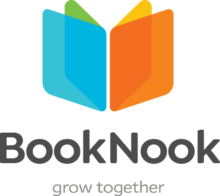7 Steps to Successful High-Impact Tutoring Programs
Watch the RecordingListen to the Podcast
What improves academic skills and heightens student confidence? High-impact tutoring, which can be a game-changer for learning outcomes. When implemented thoughtfully, such programs can have a long-term impact on student achievement.
Experts in the edLeader Panel “How Successful Tutoring Implementation Brings Initiatives to Life: From Research to Results” revealed seven practical implementation steps to take to launch and sustain a high-impact tutoring initiative.
Step 1: Generate Engagement
Whether virtual or site based, implementing a high-impact tutoring program starts with stakeholder buy-in. Laying out the project’s scope up front solidifies programming, brings people on board, and best aligns the effort with schools’ unique needs. It is, therefore, essential to:
- Understand schools’ literacy goals
- Map out the initiative’s construct, implementation dates, and action items with the tutoring provider
- Meet with school leaders and staff to set up site-specific program expectations and discuss the initiative’s ins and outs
- Help schools gather student data to determine how to best host tutoring
- Establish a school’s program roles and responsibilities
- Ensure schools have the necessary resources to implement and sustain a program
- Provide lead teachers (if any) with an orientation
- Give families information about the program to encourage commitment to supporting student participation
Step 2: Choose Program Placement
Schools must decide when to offer the tutoring program. Some prefer the traditional after-school model, which has a few drawbacks, such as lower student participation. Embedding a program during the school day is recommended, with students more likely to attend. The approach also allows for flexible scheduling options and more manageable programs.
Step 3: Staff the Program
The program’s staffing depends on the type of tutoring initiative and existing school staffing roles. A unique program implementation and management position might exist, or a dedicated district-level staff member could oversee the project.
Determining whether teachers can manage tutoring in their classrooms is also crucial. Some might already have Tier 1 interventions, making it difficult for them to oversee another. Stay on the pulse of every type of classroom to identify the people and resources needed to decide on the most appropriate program oversight.
Step 4: Manage Technology Access and Use
If the program is virtual, ensure the required technology is in place and that participating students can access the devices and tools. Then, students and school staff will be introduced to how the program functions and how to access it, from creating a password to logging in.
Step 5: Provide Support
Once the program is up and running, provide on-the-ground support, helping, for example, to mitigate challenges, analyze attendance, address attendance issues, find substitutes for absent teachers so students do not miss their tutoring sessions, etc. Promote continued cross-collaboration among families, the district, the school, and the tutoring provider for seamless program/school curriculum alignment and adaptation to students’ varied learning needs and differences.
Step 6: Maintain Smooth Program Sailing
Once implemented, everyone should be on board, aware of the tutoring services provided, and cognizant of interventions students need. To provide a consistent support network, continue meeting with relevant parties (principals, teachers, administrators, etc.).
Keep families abreast of program goals, progress, and impact. Their buy-in is essential to sustaining student motivation and regular attendance and encouraging long-term academic success. Work with school sites and families to ensure students show up and make the maximum educational gains. Establish incentives to motivate student engagement, reward their progress, and build confidence in their academic achievements.
Step 7: Identify Success
Collect program feedback through regular check-ins and mid- and end-of-year surveys. Share feedback with stakeholders through data and anecdotes. Continued student and staff engagement is a sure sign of the project’s impact. If it works well and has been embraced by the community, consider it successful. Students returning because they want to build rapport with tutors is another sign of success.
A primary sign of the program’s influence? Students who were academically behind a year ago are now on grade level. Priceless!
Learn more about this edWeb broadcast, How Successful Tutoring Implementation Brings Initiatives to Life: From Research to Results, sponsored by BookNook.
Watch the RecordingListen to the Podcast
Join the Community
Accelerate Learning is a free professional learning community that helps educators learn and share ideas for meeting students where they are in their learning and accelerating their progress.
BookNook is a leading, ESSA Level 1 provider of high-impact virtual tutoring solutions designed to accelerate K-8 student achievement in reading and math. Our synchronous learning model combines engaging evidence-based instruction with consistent learner-leader relationships for exceptional student outcomes. We deliver 1:1 and small-group virtual tutoring that integrates seamlessly with classroom instruction, ensuring that every session is targeted and effective. Our approach is grounded in decades of research, focusing on proven strategies that drive measurable improvements in student achievement.
Article by Michele Israel, based on this edLeader Panel






Comments are closed.